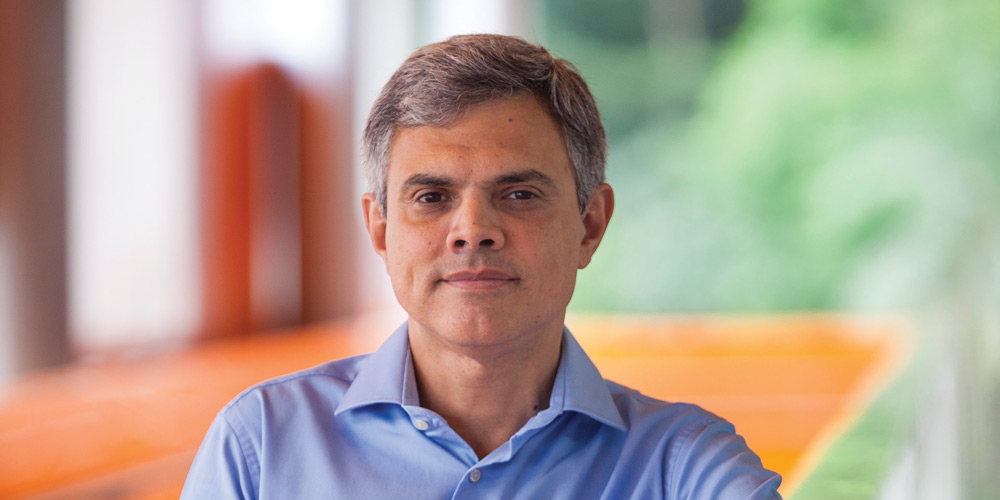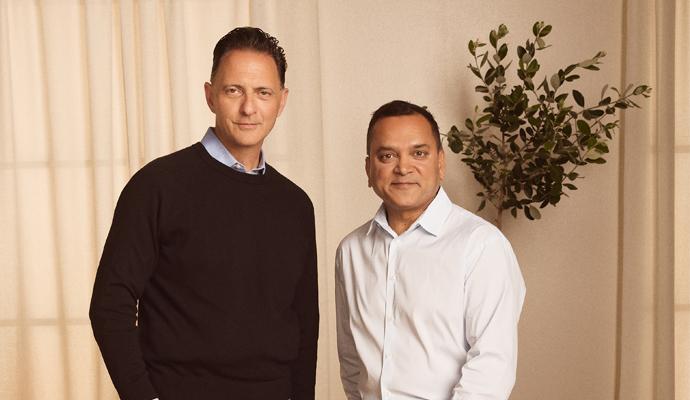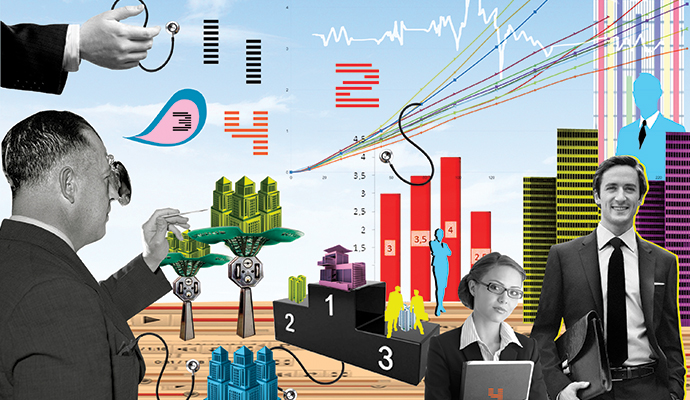A sustainable approach to the beauty business
João Paulo Ferreira, CEO of Natura, Brazil’s largest cosmetics company, uses the secrets of the Amazon to fuel an ambitious, environmentally responsible expansion agenda.
This interview is part of the Inside the Mind of the CxO series, which explores a wide range of critical decisions faced by chief executives around the world.
In August 2019, fires ravaged the Amazon rain forests, causing alarm around the world. For Natura & Co, Brazil’s largest cosmetics company and one founded on the principle of sustainability, it was especially upsetting. In its mission statement, Natura commits to working with more than 35 local communities in the Amazon region — including more than 4,300 families — to help develop products and sustainable business models that benefit the forest and its inhabitants as well as the planet. As part of that commitment, the company has been carbon neutral since 2007, and it has developed a way to evaluate its carbon footprint that other companies are now using in their own sustainability reports.
But Natura is also a business in expansion overdrive. It’s doubled its revenues to R$13.4 billion (US$3.23 billion) since 2012, when it started looking beyond Brazil and acquired Aesop, a luxury cosmetics brand based in Australia. In 2017, it bought the Body Shop, a U.K.-based company, which also had its roots in sustainable Amazon-sourced products. If Natura’s recent takeover bid for Avon Products Inc., the U.K.-based cosmetics company, is approved, it will have a worldwide sales network of more than 6 million people.
Since 2016, the person in charge of delivering the twin goals of sustainability and growth has been João Paulo Ferreira, an engineer by training and former executive at Unilever. It is a complex task. The company borrowed to finance its buying spree, issuing its first international bond after the Body Shop deal, and now wants to reduce its leverage and improve its net profits — which stood at R$548 million ($132.2 million) in 2018 — while at the same time meeting a series of very ambitious business, social, and environmental targets.
Strategy+business talked to Ferreira about these goals, the challenges of global expansion, and the threatened jewel that is the Amazon at Natura’s new headquarters buildings in eastern São Paulo, where the dense vegetation, natural light, and internal gardens symbolize the company’s green credentials.
S+B: Your business is based on the Amazon as a resource. What is your view about the fires and the climate change debate?
FERREIRA: At Natura, we believe sustainability is a shared responsibility. It is time for citizens, consumers, and companies to come together to curb the destruction of the Amazon and to strengthen measures against climate change.
The fate of the Amazon — its people and its natural resources — cannot be linked to a vision that treats economic development and environmental conservation as irreconcilable. Our business model proves that this vision is a huge mistake.
Natura believes in using only ethically sourced natural ingredients and sustainable packaging. In fact, Natura uses 25 biodiversity assets of sustainable origin. These are ingredients like Brazil nut, murumuru, andiroba, and ucuuba.
Almost two decades ago, we started working with local communities in the Amazon region. This work helps the conservation of almost 1.8 million hectares of Amazonian forest.
S+B: You have presided over a period of rapid expansion of Natura in the last three years. How did this come about?
FERREIRA: The three founding partners — Luiz [Seabra], Guilherme [Leal], and Pedro [Passos] — had been thinking about the development of a global brand for some time, but in 2010 the board and the executive committee pushed ahead with diversification. They decided that Natura had to become a multi-brand business with several sales and distribution channels operating in several regions. And they decided that the way to achieve this goal should include linking up with other companies and brands with similar values.
We want all these acquisitions to retain their own identity and autonomy, but we also want interdependence within the group. We are trying to build a collaborative network that adds value for all those involved, whether they be clients, suppliers, employees, consultants, or governments.
By the end of 2012, we had brought Aesop into the family. Aesop is an Australian cosmetics company that started in the late 1980s and was in the luxury end of the market. It sold its products through its own shops and in department stores, but its owners shared many of the values of Natura. Then Body Shop [formed in 1976 by Dame Anita Roddick] happened to come on the market. The company also had highly similar cultures and values to Natura. I can remember Anita Roddick visiting our factory at Cajamar [near São Paulo] in the early 2000s and meeting founders Guilherme and Luiz.
S+B: And how have you grown within Latin America?
FERREIRA: The Natura brand has expanded in Latin America over the last decade in Argentina, Bolivia, Chile, Colombia, Mexico, and Peru, and there is still plenty of room for growth. At the same time, though, we had to renew and reinvigorate our business in Brazil itself as the slowdown between 2014 and 2016 hit us. Growth rates are much lower than they were at the start of the decade, but are still [higher] than the economy as a whole, so we are still seeing expansion of between 3 and 5 percent in the sector.
The market has become a lot more competitive with the arrival of several international brands. This has put enormous pressure on our business. It has forced us to revisit the “shopping experience” partly in response to the changing expectations of our customers. We have had to modernize our approach. We opened many shops in shopping malls, put into effect our online business, and upgraded the beauty consulting activity of our independent direct sales force as well, through training, and we have empowered them to meet their customers’ wishes more effectively.
At the same time, we are making serious investments in product development. And in this area, we are using Brazil’s natural biodiversity as a source of technological innovation. We blend traditional, classic, or global styles of cosmetics with ingredients developed from the rain forest through the application of cutting-edge genomic and proteomic science. It has taken us 20 years to develop these methods.
S+B: What does that mean in practice?
FERREIRA: We have a new skincare product called Chronos Acqua, and the formula for the cream uses hyaluronic acid [a gel-like, water-holding molecule] that is derived from a Brazilian oil seed called fevillea. The cream helps the skin generate its own hyaluronic acid and produce its own moisture. Chronos — a product line we originally developed 30 years ago — has become quite iconic. It is technologically advanced, and its mix of traditional cosmetics and natural ingredients is present across the product range. Every perfume we make has come from our palette of rain forest ingredients.
S+B: What are consumers demanding these days?
FERREIRA: Customers are increasingly demanding products that bring significant benefits. So the pressure is for us to set ourselves apart and not do what others are doing. One recent example is the Lumina shampoo and hair product range, which was developed using a biomimetic-based ingredient that creates a copy of a protein present in spider webs. This protein restores the hair’s molecular structure in an impressive way.
Another good story is an Amazon tree called the ucuuba. The tree’s berries provide a fruit that can be made into a pulp and used to make a powerful body moisturizer. We’ve been researching this ingredient for nearly a decade. Communities used to chop down the ucuuba and sell the wood to make brooms or just for general use as timber. They’d get R$20 ($4.80) for each tree. We have developed an entire product range based on ucuuba. Nowadays, those same communities are able to make R$60 ($14.50) from the same tree every year.
We’re currently working with 37 communities in Brazil, of which more than 30 are in the Amazon. So we believe that it is possible to balance economic progress and environmental conservation. You can also produce goods from Amazon resources. But you have to do this in an orderly way that conserves the local culture, including traditional know-how, and adds value to the communities involved.
S+B: As part of this commitment to sustainability, you’ve become carbon neutral. How does that work?
FERREIRA: Yes, we have been carbon zero since 2007. How do we do that? First, we calculate our carbon footprint. We take into account everything, ranging from the extraction of raw materials to the resources we use in manufacturing, marketing, and distribution and the way waste is disposed of. We even make provision for the trips that our executives take. It’s a cradle-to-grave approach.
We made a huge effort to lower our carbon emissions but, at the moment, we reckon that we emit the equivalent of a little more than 300,000 tons of carbon per year. Some companies try to neutralize their emissions by purchasing carbon credits, but that’s not what we do. We’ve identified and funded projects that sequestrate around 300,000 tons of carbon so we can say that we have neutralized all our emissions.
We have learned how to evaluate projects [in a manner] that is so sophisticated that people have started to offer us projects to evaluate, and we now have more potential projects than we need for our own purposes. So we have set up a platform and now offer projects to third parties to back. Three years ago, Itaú bank funded one of our carbon neutralization projects; more recently, B3 [Brasil Bolsa Balcão S.A.], the São Paulo stock exchange, and Lojas Renner, a retail group, have followed suit.
S+B: How do these initiatives affect your ability to compete with companies that aren’t so assiduous about such matters?
FERREIRA: We think one of the big challenges is to level the playing field from a sustainability perspective. The business world has to agree [on] how these things should be included in a financial balance sheet. For example, in addition to our ordinary P&L statement, we have issued an environmental P&L that assigns an economic value to our activities from an environmental perspective. We’re also about to issue a social P&L. I think it is essential to develop protocols so that these external factors can be measured, and companies properly compared.
I think there’s work to be done. Many business leaders like to talk about it, but then they transfer social and environmental responsibility to consumers. Consumers don’t like that. You either provide value or you don’t. You should be able to put that in your P&L. We’re carbon neutral and that has a cost. It’s there in our balance sheet. But it is very hard to show that with the current financial instruments. I believe that in 50 years, saying that a company is not carbon neutral will be the same as saying today that a company resorts to child labor.
S+B: The emerging markets are obviously a big potential source of growth. Where do you see most of the growth happening?
FERREIRA: We’ve been observing more restrained economic growth rates around the world. We’re not seeing China growing by double digits as we did a few years ago, and I think we’ll see slower growth rates across Asia. The cosmetics market can keep up with that because there are many new consumers starting to buy cosmetics, especially in Asia, Africa, and Latin America. These markets have different characteristics. Asia is very strong in skin care, but not so much in perfumes. Latin America is very strong in perfumes and body care, but not so much in skin care. Consumption patterns will evolve, and that is likely to provide an extra source of growth on top of the simple expansion of economies and consumer markets.
I believe that in 50 years, saying that a company is not carbon neutral will be the same as saying today that a company resorts to child labor.”
None of our brands is present in China because of the government’s current animal testing requirements. As a company, we stopped animal testing many years ago, but in China these tests are required for several cosmetic products. We believe that the laws will evolve more at some point and that the authorities will accept the cruelty-free standards that are currently used around the world.
We have developed alternative testing techniques. We even print artificial skin using a 3D printer. We believe that at some point Chinese agencies will also eliminate this requirement. In any case, we think that outside of the country, our products are popular among Chinese consumers. They travel a lot and are able to appreciate our brands — especially Aesop and Body Shop.
S+B: Following your rapid expansion and acquisitions, how are you preparing your sales network?
FERREIRA: We’re constantly working on our strategy. Nowadays, companies are using online social networks to develop brand preferences. Bloggers and video bloggers — so-called vloggers — recommend products, talk about their benefits, and say where they can be found. They can be very influential. That’s what our direct sales force used to do pre-Internet in the 1980s and 1990s. So one of our challenges is to convert as many of our consultants as possible into digital influencers.
Now the vast majority of our consultants interact with their customers and with us on a mobile digital platform. There, they get all the information they need about products, release dates, and discounts. They can get in touch with their supervisors and their customers. They can share content, collect orders, and so on…. and they can offer payment solutions. They can do all that online. And we’ve embarked on this journey together with them. Our model also allows the best of our consultants to build their own businesses.
Entrepreneurship is the key element. Some of our salespeople turn the activity into their main activity and become full-time salespeople; more recently, there are many who operate retail franchises as well. We love the idea of transformation and of promoting social change through this network. We have millions of stories of individual transformation. It is really moving when people say that they’ve raised their children, paid for them to go to school, bought a motorcycle, or bought a home to be economically free from a violent marriage, and so on, [by] working for us. It’s something that actually drives us. It’s all part of the company’s origins and beliefs.
Author profile:
- Richard Lapper is a freelance writer and consultant specializing in Latin America. He is an associate at the Royal Institute for International Affairs and a former Latin America editor at the Financial Times.




